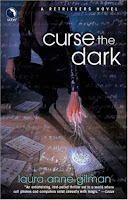I have a huge TBR pile, as does pretty much any book blogger or reader. I've been working my way through slowly but surely. I think I'm about 5 books into a box that holds at least 50...It's a marathon, people!
I would say that most of the books I'm going to be reviewing for a while are books that are a little older. I'll try to throw in some other books--I've got a Sherrilyn Kenyon book and a new Elizabeth Moon book review coming up soon. There will also be an interview!
But on to the book! I have a confession. I love reading about World War II. It's an absolutely fascinating time period. There was so much going on, so much corruption, so much amazing sacrifice, and so much triumph of the human spirit. Most of the time, the books that you find about this time period are set in Germany. This book was set in Denmark.
I learned a lot about Denmark's history reading this book. I know that the author does quite a bit of historical writing, so I'm assuming that he's historically accurate. I'm just thinking in terms of the big facts--Denmark's king gave up to Nazi occupation with no resistance. The Nazis occupied with little difference in the country other than to institute a curfew, require ration cards, and prevent the Air Force from flying anything other than gliders. There was a Danish resistance, and the Author's Note at the back states that the Danish resistance was the most successful resistance during the war.
There were quite a few characters in the book, and Follett kept jumping about telling their stories in different places. I had a bit of trouble keeping up with exactly where each person was because I am not familiar with Denmark and its cities other than Copenhagen. The people were very distinct, and I had no difficulty following who he was writing about.
The main characters were Hermia, a British government official who has helped to set up Danish Resistance, her fiancee Arne, and Arne's younger brother Harald. Arne and Harald are pulled into the Danish Resistance despite Hermia's attempts to keep them uninvolved. Harald takes a shortcut through the German camp one night and discovers a radar array that is helping the Germans shoot down the RAF planes. He is asked to take photos by one of the resistance members, Poul, who is then blown up by a vengeful Danish police officer.
Harald is left with no way to get the photos to Britain, although he tries to meet up with Hermia who has crossed over into Denmark because her resistance fighters have been disappearing. He has fallen in love with Karen, the twin sister of one of his classmates and is living in an abandoned monastery on the family's property after a fight with his very conservative Puritan father. Karen's family has an old Hornet Moth airplane stored in the monastery, and Harald's only chance to get the photos to the British in advance of the next raid is to repair the airplane, steal the gasoline, and fly to England with the film.
The book was exciting and interesting. Of course, it was made even more so because I enjoy the time period. I was never quite sure what was going to happen next, and if there would be a happy ending or not. I would absolutely recommend this book, especially if you are interested in World War II history.















